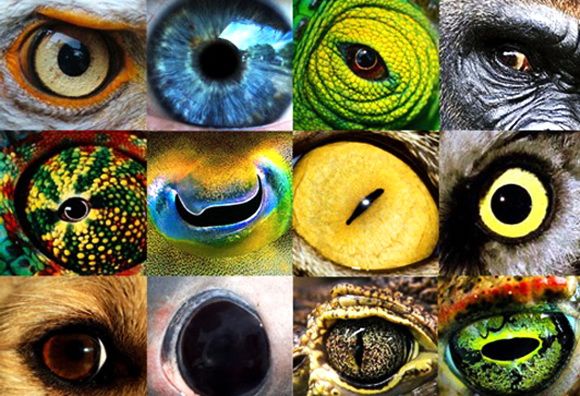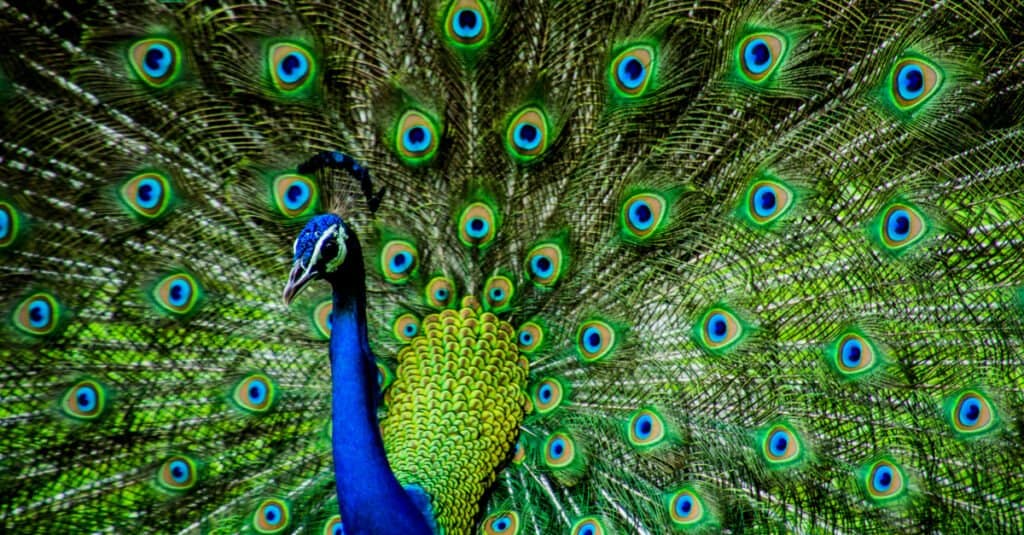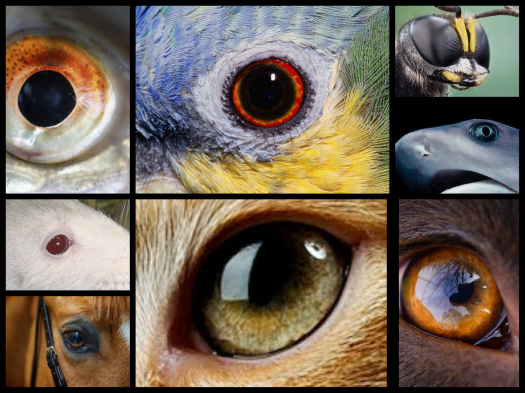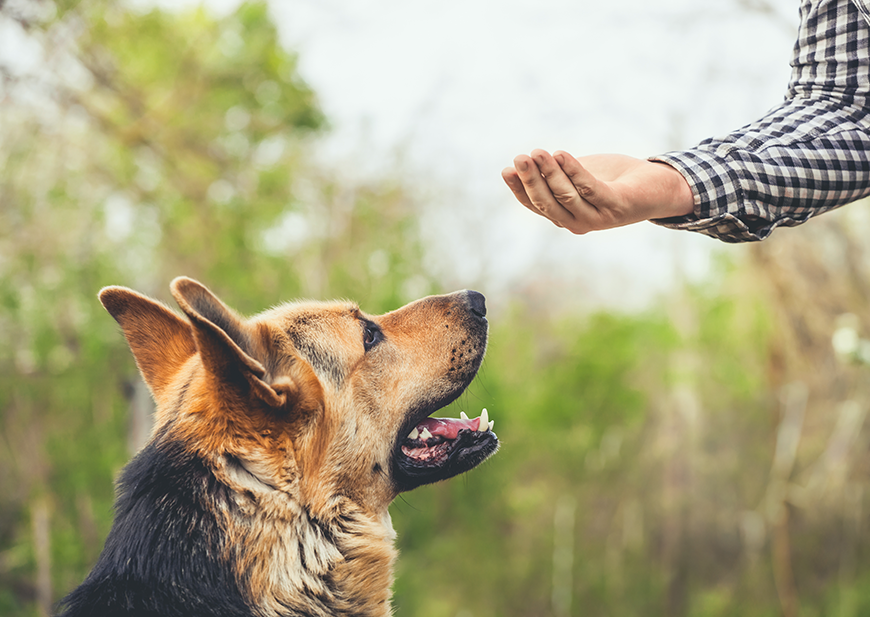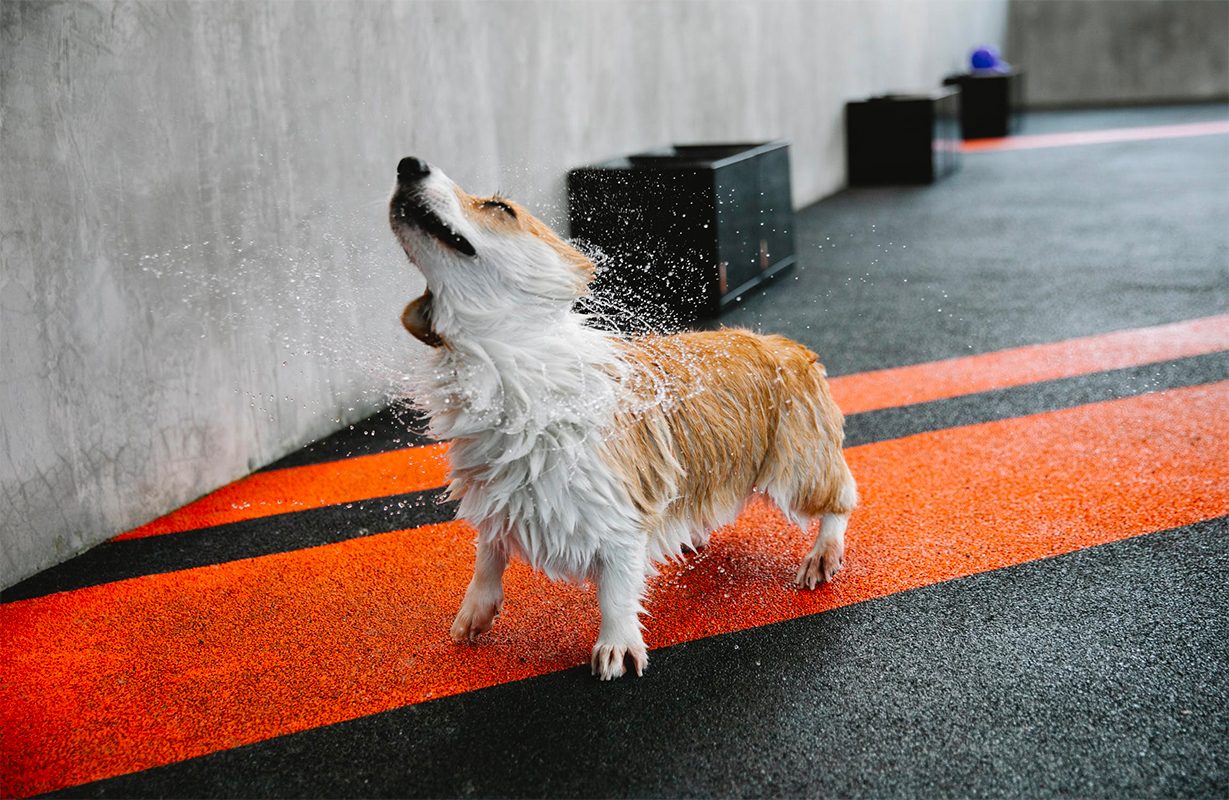How Animals See this Beautiful World. Only a few creatures perceive the world as we do, whether they have one eye or many, technicolor or black and white. We can simulate how the environment might appear to an animal by examining the characteristics of its visual systems. Each picture below depicts a scenario from a person’s point of view. Slide the slider to the left to view the scene from an animal’s perspective.
Dogs’ eyes
Dogs only have two cones, compared to the three cone types found in human eyes. Their cone cells are specialized for detecting yellow and blue to ultraviolet light. A pigment is present in every cone type responsive to specific light wavelengths. A combination of color-sensitive eye pigments and brain processing determines the range of colors that an animal may perceive. Dogs are unable to discern as many colors as we can because they have fewer cone kinds.
A gecko’s vision
Low light makes it difficult or impossible for humans to see colors. That’s because intense light is necessary for our cone cells to function properly. We can see in low light thanks to other cells in our eyes called rod cells. However, the only light-sensitive pigment in rod cells means that humans only see in grayscale at night. As nighttime hunters, geckos have a distinct edge over other animals because they have superb color vision. In the dark, their eyes are up to 350 times more sensitive to color than ours are due to evolutionary development.
The vision of a garden snail
Garden snails can’t focus their eyes or perceive color, but they might be able to figure out this other snail passing by or an oncoming predator. The snail uses its capacity to distinguish between light levels to guide itself toward areas of darkness.
Giant clam
Having anchored themselves to rocks or coral, adult giant clams are fully motionless. With hundreds of tiny pinhole eyes along their soft bodies’ edges, they take in the surroundings. There is no lens in pinhole eyes with a deep cup-like shape and a small entrance. These are just one of the many different kinds of eyes that mollusks, or creatures like slugs, snails, oysters, and octopuses, possess and which show various stages in the evolution of the eye. Although huge clams can detect three different colors of light, they cannot combine the data; instead, they perceive vivid but blurry images. The clams can react by either sealing their shell or squirting a jet of water to alarm a prospective predator because their eyes can detect movement in the area.
Spider vision while jumping
These spiders hunt thanks to the excellent vision provided by their four pairs of eyes. They leap into action as soon as they spot possible prey. High-resolution vision is provided by the spider’s largest set of eyes facing forward. Peripheral vision and motion detection are done using the smaller other eyes. Compared to us, jumping spiders are more color-sensitive. The petals of this flower have more complexity visible to them than to us since they even have pigments that are sensitive to UV light.
Cat
Cats have extremely poor distant vision and, like dogs, can see blue and green hues. They also have trouble with close-up things. It’s interesting to note that a cat’s poor vision and inability to adjust the shape of its eye lenses would likely cause a slow-moving item in the distance to appear stationary. Although having slightly stronger peripheral vision than humans, cats have a vision that is equivalent in breadth to human vision, allowing them to notice nearby prey and predators.
How Animals See This Beautiful World
Goldfish
Due to their ability to see objects up close, goldfish may be able to focus on objects that would be exceedingly difficult for humans to notice, such as objects floating in the water that they wish to eat. According to studies, goldfish can detect light refractions, which they use to guide them while swimming by illuminating nearby objects and other aquatic life. Studies that resembled the goldfish eye discovered that it should be possible for goldfish to see all the colors that humans can see and ultraviolet light, indicating that they can see color waves that humans cannot see. The fishbowl would be visible to goldfish in one view, but it would be very blurry and difficult to distinguish individual details because they can see almost 360 degrees around them.
Rat
Rats can see in blues and greens more like dogs because of their retina’s decreased number of cones, despite having generally terrible vision. Their ability to function independently of one another allows them to simultaneously be looking at the floor and the ceiling, which gives them a unique perspective on their surroundings.
We attempted to depict this exact scenario in our visualization. Rats are technically capable of seeing a wider range of objects than humans, but because of their poor vision and dual vision, they cannot combine the images as efficiently as a human would.
Housefly
The vision of flies is frequently portrayed in movies as having a honeycomb-shaped structure of tiny hexagonal views, but in reality, it is much more blurry, almost pixelated, due to their extremely short viewing distance. Even so, unless they are very close to their subject, they cannot make much use of their 360-degree vision.
Despite this, flies are among the animals with the quickest visual reactions, which explains why they are so adept at evading danger. They would be unable to tell you apart from other people, but they would be able to see a sizable mass moving slowly in your direction, giving them a clear path to safety. Recent research suggests that flies might perceive color like humans, but science does not yet allow us to determine which specific colors they can see. Given the effect on the back windows, we can conclude that they can see polarized light.
Unarmed Eagle
Although a bald eagle is a strange pet, it has served as America’s national bird since 1782, and most importantly, its vision is fascinating. When hunting small prey while soaring through the air, eagles have an ideal vision range roughly 4–8 times greater than humans. The colors we see would appear much brighter to an eagle because they can distinguish many more colors than humans can. Since eagles can see ultraviolet light as well, they could spot the rat hiding behind the plant in our mental image and make out a urine trail.
UV light and animals
As we’ve already mentioned, some animals have the ability to see ultraviolet light, which is usually not something humans can do. UV light, frequently described as white-blue or white-violet light, can be perceived in some ways by some people with aphakia (lens loss in one or both eyes). The majority of people, however, would find it to be analogous to asking a blind person to describe a color that they have never actually seen.
It is crucial to the daily existence and survival of many animals. In other words, a goldfish could use it to better “see” when foraging for food, or an eagle could use it to track the urine trail of an animal it is hunting. Where appropriate, we have attempted to depict this in our imagery using the white-violet/heat imagery commonly associated with UV, but it may appear completely different to the animals themselves.
Popular Post
How to choose a training
Top tips for caring for
Tips for keeping your cat
Archives
Tags
Email for newsletter
At Pets Mall, we offer premium quality dog and cat food, pet supplies, and vaccination. Get everything you need for your pet!
If you pets need immediate veterinary’s treatment, give us a call and we will send a specialist vet to your home.
- 34 Q Block, Johar Town, Shah Alam Road, Near Ayub Chowk , Lahore
- petsmallpk@gmail.com
- 0301-7475573 , 0313-4343476
COPYRIGHT © PetsMall.pk ALL RIGHTS RESERVED. | DEVELOPED BY DIGIKNOWN



